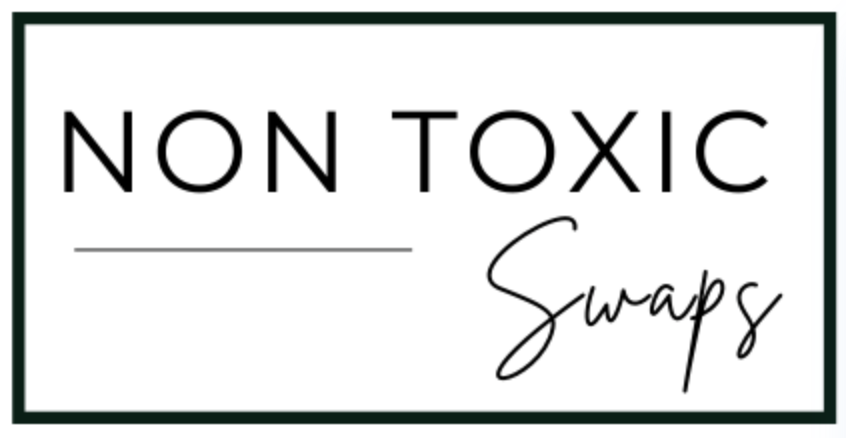Last Updated on March 31, 2025 by NonToxicSwaps
The purpose of toothpaste is to clean the teeth and help protect enamel, but the average toothpaste includes ingredients that are not needed to fulfill this purpose.
Switch to a non toxic toothpaste to limit your exposure to toxic ingredients.
Fluoride in Toothpaste
Fluoride is present in toothpastes to prevent tooth decay and remineralize enamel. (PMID: 30213354)
However, fluroide is linked to endocrine disruption (PMID: 32758781), and studies have shown neurotoxicity in areas w/ elevated fluoride in groundwater (PMID: 31856837).
We are exposed to fluoride through the water supply, dental treatments, and oral care products. Since it’s difficult to measure your exact exposure levels, many choose to avoid fluoride in their products when they can.
Safe Alternatives
Hydroxyapatite (HA) also remineralizes enamel.
- “Research has shown comparable effectiveness for HA when compared to fluoride in remineralisation and CHX in biofilm management. HA’s effectiveness in reducing dentine hypersensitivity and whitening teeth appears to be promising too. Although the evidence for HA is comparable to other substances, its non-toxic and biomimetic property provides an advantage over conventional products.” (PMID: 34500955)
- “A concentration of 10% nano-hydroxyapatite may be optimal for remineralization of early enamel caries.”(PMID: 19498220)
- Nano- vs. Non-nano particles: nano particles are smaller and can be more readily absorbed into the skin, while non-nano particles are less likely to be absorbed. Nano has been shown to be more effective for remineralization.
Xylitol can help remineralize but can also fight bacteria that may cause cavities.
- “Xylitol decreases the incidence of dental caries by increasing salivary flow and pH and reducing the number of cariogenic (MS) and periodontopathic (Helicobacter pylori) bacteria, plaque levels, xerostomia, gingival inflammation, and erosion of teeth. (PMID: 25422590)
Ingredients to Avoid in Toothpaste
- Carrageenan: research shows mixed evidence on carcinogenic effects (PMID: 11675262)
- Natural flavors/sweeteners: like the term “fragrance”, this blanket term can hide any number of natural and/or chemical ingredients but does not disclose specific ingredient used
- Kaolin clay & bentonite clay: containstrace minerals, including lead which is a reproductive & developmental toxin and carcinogenic (PubChem CID: 5352425)
- Erythritol: conflicting data on cardiac health of those with elevated erythritol levels (PMID: 36849732)
- Titanium Dioxide: potential carcinogen, studies show carcinogenic effects when inhaled; (PubChem ID: 26042); studies on nano-particles show inflammation and DNA effects (PMID: 19887611)
- Sodium lauryl sulfate (SLS): skin & potential respiratory irritant (PubChem CID: 3423265)
- Triclosan: antimicrobial associated with endocrine disruption, reproductive & developmental defects, bioaccumulative (PMID: 29182464); can degrade into dioxins (endocrine disruptor/carcinogen) when exposed to light and in water posing environmental pollution
- Dyes: can be carcinogenic, genotoxic and offer no benefit to the product other than color (example: Red 40, Blue 1, Yellow 5) (PMID: 23026007)
- Ethoxylated ingredients (PEGs, PPGs, polysorbates, ceteareth, phenoxyethanol): ethoxylation process produces ethylene oxide, a carcinogen and developmental toxin (PubChem CID: 6354) and 1,4-dioxane, a suspected carcinogen (PubChem CID: 31275)
- Parabens: preservatives linked to endocrine disruption (PMID: 29596967), known to be carcinogenic due to endocrine disruption (PMID: 36746253) Parabens may be listed as methylparaben, ethylparaben, propylparaben, butylparaben, isobutylparaben, isopropylparaben, and benzylparaben.
- Propylene glycol: penetration enhancer (PMID 31786711), bio-accumulative, can impact the nervous system (PMID: 25762872)
- Sodium benzoate: study has shown to be mutagenic and cytotoxic in lymphocytes (PubChem ID: 517055); can form benzene when combined with ascorbic acid (Vitamin C) (PMID: 33371618)
- Diethanolamine (DEA): respiratory irritant, can interact with other preservatives to form nitrosamines, which may be carcinogenic (PubChem CID: 8113) (NJ Hazardous Substance Fact Sheet, CAS #: 111-42-2)
Non Toxic Toothpaste Brands
Non Toxic Kids Toothpaste Brands
- Himalaya Botanique Kids Toothpaste
- Weleda Kids Toothpaste
- Active Wow Training Toothpaste
- Dr. Brite Kids Toothpaste
- Rain Training Toothpaste
Check out more Non Toxic Swaps recommendations in the guides below:
NON TOXIC PERSONAL CARE GUIDES
- Toothpaste
- Hand Lotion
- Deodorant
- Men's Deodorant
- Body Lotion
- Body Wash
- Bar Soap
- Natural Remedies for Mosquito Bites
- Non Toxic Valentines’ Day Self Care Guide
Hair Care
Skin Care
NON TOXIC HOME GUIDES
NON TOXIC MAKEUP GUIDES
NON TOXIC BABY GUIDES
- Baby Laundry Detergent
- Baby Wash
- Baby Sunscreen
- Baby Diapers
- Baby Wipes
- Baby Lotion
- Baby Safe Paint for Cribs
- Eczema Cream for Babies & Kids
